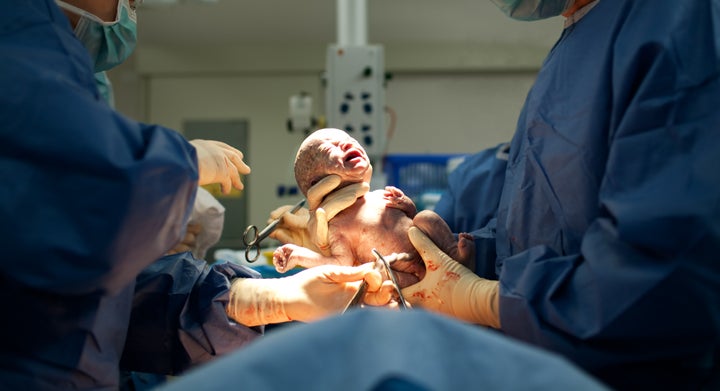
For years, public health officials in the United States have been trying to make sense of this country’s high Cesarean section rate. Nationally, 32 percent of all deliveries now C-sections ― and within that figure, there is enormous range. In some hospitals, the C-section rate is 7 percent. In others, it’s closer to 70 percent. Those differences aren’t simply explained by women’s health status or even socioeconomic status.
“It turns out that in 2017 in the United States, the biggest risk factor for getting the most common surgery, which is a C-section, is not a woman’s medical risks or preferences, but literally the hospital she goes to. Like, which door she walks through,” Dr. Neel Shah, an obstetrician and researcher with the Harvard T.H. Chan School of Public Health researcher told HuffPost. “And there hasn’t been a great explanation for that for years.”
In a new study published in the journal Obstetrics and Gynecology on Wednesday, Shah and his co-researchers asked the question: What gives?
The answer, they found, is that the specific management culture of a labor and delivery units may be one of the biggest factors determining whether low-risk moms ― meaning women delivering a single, full-term baby ― undergo a C-section. And while that might sound obvious, it’s one of the first studies to delve into the ways management style contributes to unnecessary C-sections.
Shah and his co-researchers analyzed 220,000 deliveries that took place over two years at 53 different hospitals across the country, which were diverse in terms of geography, size and patient mix. They interviewed managers to understand how they manage nursing specifically, how they manage patient flow (including issues like bottlenecks overcrowding) and also measured something they called “unit culture,” or how the staff communicated and collaborated.
Overall, the study found that labor and delivery units with a more proactive management approach tended to have much higher C-section rates than those with a more reactive style.
“You would think being more proactive is better, because being proactive in life is generally thought to be better. And it might be. But the most proactive places in managing their unit culture and nurses had the highest C-section rates,” Shah said.
It’s not yet clear why that is, he said, but he thinks that it may be because managers on labor and delivery units often have competing goals. For example, if a manager is getting the message that financial performance is an important goal ― and is taking proactive steps to achieve that goal ― then moving patients through quickly is important. Performing more C-sections can help do that. If neonatal outcomes are the ultimate goal, labor and delivery units may push more C-sections to ensure healthy babies.
“One of the potential takeaways is that we may have taken our focus off of the moms in an effort to make care as good as possible for babies and maybe to optimize financial performance,” he said.
Proponents of the so-called “natural birth movement,” who have pushed back against what they see as the over-medicalization of a normal process, have spent years making similar arguments.
But Shah hopes that this in-depth study exploring the issue will help hospitals tackle an issue hiding in plain sight ― that it’s not just doctors who influence whether low-risk women have C-sections, but the culture around them. And it’s not that C-sections are inherently bad. In many cases, they’re absolutely necessary. But according to statistics cited in the new study, 45 percent of them may be avoidable.
Of course, moms-to-be and their partners aren’t necessarily privy to the inner workings of the culture of their labor and delivery unit, but as researchers and hospitals get a better handle on how exactly management influences outcomes, Shah is hopeful they can institute simple changes that will have clear effects. He cited the example of surgical safety checklists, which have been shown to dramatically cut the number of complications resulting from operations worldwide.
“Being the manager of a labor and delivery unit may be the hardest job in health care. There’s so much uncertainty over what’s going to happen from minute-to-minute. You don’t know when your customers are going to show up...you don’t know how long women are going to take in labor and you don’t know which ones of them are going to become sick enough to maybe need the operating room or blood bank or another critical resource,” Shah said. “What we’re seeing is that people manage that in very different ways. There’s no textbook that says, ‘This is how you do it.’”